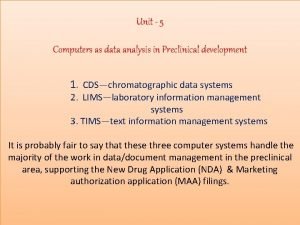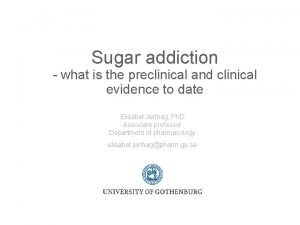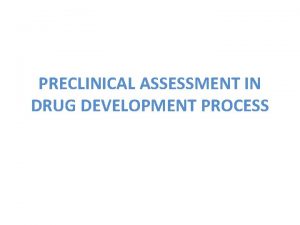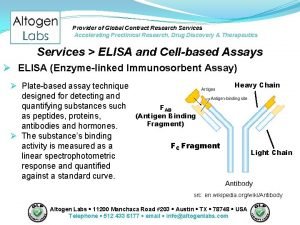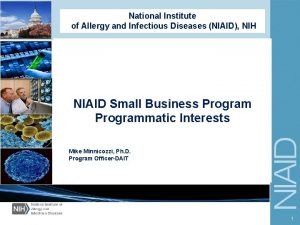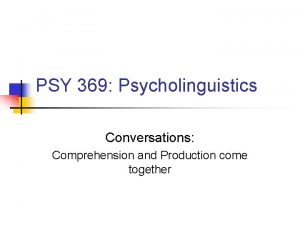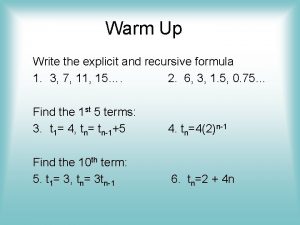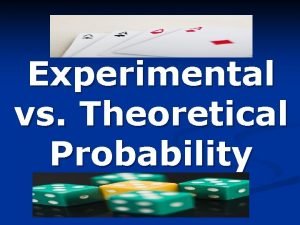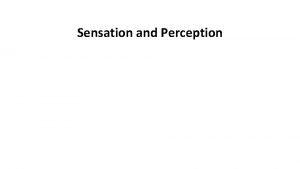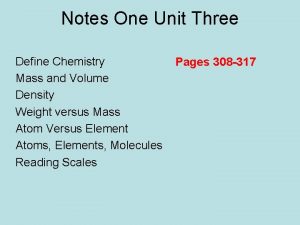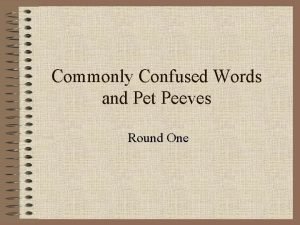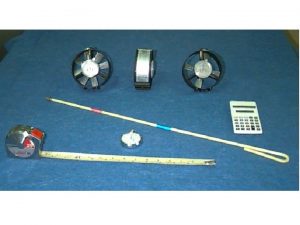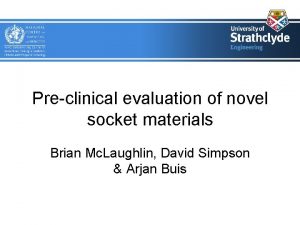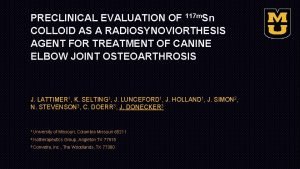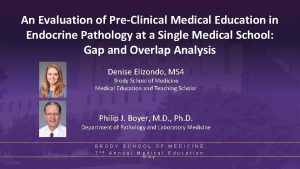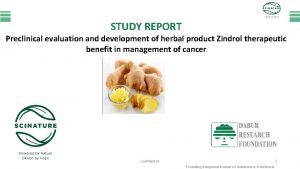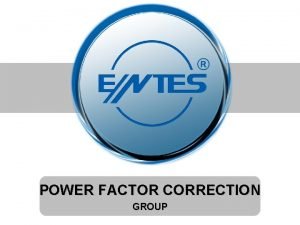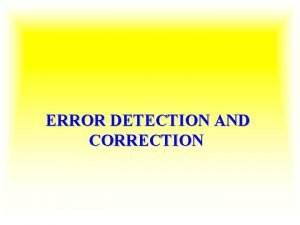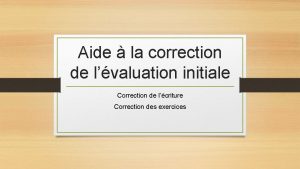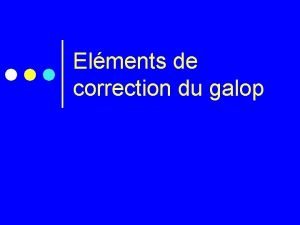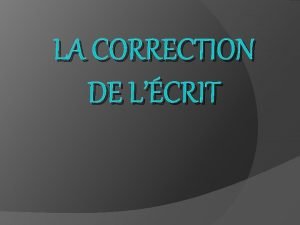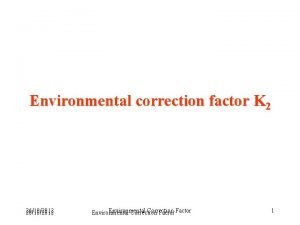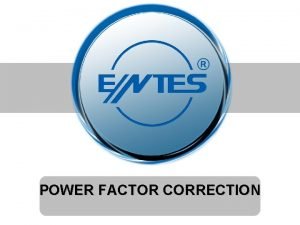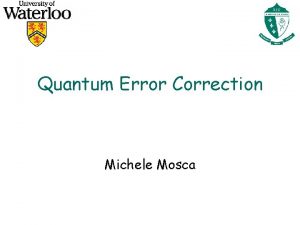Preclinical evaluation of MRattenuation correction versus CTattenuation correction



















- Slides: 19

Preclinical evaluation of MR-attenuation correction versus CT-attenuation correction on the sequential whole-body MR/PET Jason Bini 1, 2, Jesus Mateo 1, 3, Josef Machac 4, Jagat Narula 5, Valentin Fuster 3, 5, Zahi Fayad 1, 5, 6 , David Izquierdo-Garcia 1 1 Translational and Molecular Imaging Institute, Mount Sinai School of Medicine, New York, NY, USA 2 The City College of New York, Department of Biomedical Engineering, New York, NY, USA 3 The Centro Nacional de Investigaciones Cardiovasculares (CNIC), Madrid Spain 4 Division of Nuclear Medicine, Department of Radiology, Mount Sinai School of Medicine. , New York, NY, USA 5 Department of Cardiology, Zena and Michael A Weiner Cardiovascular Institute and Marie-Josee and Henry R Kravis Cardiovascular Health Center. , Mount Sinai School of Medicine, New York, NY, USA 6 Department of Radiology, Mount Sinai School of Medicine, New York, NY, USA

MR/PET Positron Emission Tomography (PET) v v Functional imaging of physiology Highly sensitive probes (10 -12 Molar) Low spatial and anatomical resolution Anatomical imaging from CT scan Magnetic Resonance Imaging (MRI) v High spatial resolution anatomic imaging v Functional imaging possible but relatively low probe detection sensitivity (10 -6 Molar)

MR/PET Combined Sequential Whole-body 3 T = 30000 G 3 T MRI PET 10 G 3 m v Many technical challenges to combine PET and MR v MR provides superior soft tissue contrast vs. CT v MR/PET lower radiation dose to patient vs. PET/CT Philips Ingenuity TF sequential whole-body PET/MR system

Attenuation Correction v PET/CT attenuation correction (AC) v Clinical gold standard v Low-dose CT scans easily transformed to attenuation map (CTAC) at 511 ke. V for use in PET reconstruction algorithms 1 CT to PET 511 ke. V attenuation coefficient conversion v MRI v No direct information about photon attenuation v Measures proton densities and magnetic relaxation times v MR-based AC (MRAC) v Non-trivial method of assigning MR signal intensity to empircial photon attenuation coefficients in each voxel 1 Burger C, et al. Eur J Nuc Med Mol Img. 2002; 29(7): 922– 7.

Attenuation Correction Attenuation correction implemented on Philips sequential whole-body MR/PET T 1 -wieghted MR acquisition that matches PET dimensions Similar to low-dose CT in PET/CT Three class segmentation algorithm following humanlike a priori model (air, lungs and soft tissue) CT attenuation maps MR attenuation maps Animal imaging v. Lungs fail to segment - rabbit lung volumes do not match human-like a priori model v 2 -segment classification (soft tissue and air) v. Soft tissue (0. 095) 1, 2 Air (0) 1 Meikle SR, et al. JNM. 1993; 34(1): 143– 50. 2 Bettinardi V, et al. Eur J Nuc Med Mol Img. 1999; 26(5): 447– 58.

MRAC vs. CTAC Objective: Evaluate MRAC implemented on the combined sequential MR/PET scanner versus CTAC with the same PET data in an animal model

Animal Model v 20 atherosclerotic New Zealand White male rabbits (3. 8± 0. 3 kg) v. Retrospectively analyzed v 4 -5 m. Ci injected of either… v Fluoromisonidazole (18 F-FMISO) (n=12) v Fluorodeoxyglucose (18 F-FDG) (n=8) CT Imaging Protocol v CT acquisition v Non-contrast low-dose CT v Stand-alone CT scanner v Philips Brilliance i. CT -- 256 slice multidetector CT v Voxel size 0. 625 x 1. 0 mm v Image matrix 512 x 399

PET Imaging Protocol v. PET acquisition v 3 D mode v Time of flight v 1 bed position/15 minutes – 3 hours post injection v Images reconstructed into 128 x 90 matrix v Voxel size 2 x 2 x 2 mm v 3 D RAMLA reconstruction with 3 iterations and 33 subsets v Philips system standard corrections v Normalization, dead time, decay, scatter, random coincidences, sensitivity v Attenuation correction provided by MRAC or CTAC methods v No MR coils on table v MR/PET table template inserted in reconstruction

PET Image Reconstruction CT CT coregsitered to MR CT attenuation map - bilinear conversion to 511 ke. V attenuation coefficients v CT and MR now both in PET space MRI MR attenuation map PETCTAC PET reconstruction PETMRAC

CT attenuation map PET with CTAC MR attenuation map PET with MRAC Percent difference map

PET quantification voxel-by-voxel R^2=0. 99, p<0. 0001 Average difference for all voxels -0. 94% (-0. 06± 0. 30 SD)

PET quantification Regions-of-interest (ROIs) Six ROIs Aorta, liver, left and right kidneys, spine and soft tissue (back muscles) Mean SUV ± Standard Deviation (SUVmin, SUVmax) ROI PET CTAC PET MRAC p AORTA 0. 30± 0. 22 (0. 25, 0. 37) 0. 27± 0. 22 (0. 22, 0. 35) <0. 0001 LIVER 1. 06± 0. 68 (0. 54, 1. 40) 0. 95± 0. 62 (0. 47, 1. 27) <0. 0001 1. 24± 0. 55 (0. 34, 3. 02) 1. 12± 0. 48 (0. 31, 2. 47) <0. 0001 1. 22± 0. 56 (0. 31, 3. 11) 1. 14± 0. 53 (0. 30, 2. 91) <0. 0001 0. 42± 0. 30 (0. 21, 0. 71) 0. 31± 0. 25 (0. 15, 0. 54) <0. 0001 0. 19± 0. 11 (0. 13, 0. 45) 0. 16± 0. 10 (0. 11, 0. 38) <0. 0001 LEFT KIDNEY RIGHT KIDNEY SPINE SOFT TISSUE

PET quantification Regions-of-interest (ROIs) R^2=0. 99, p<0. 0001 -10. 8% (-0. 08± 0. 06 SD) R^2=0. 99, p<0. 0001 -9. 7% (-0. 15± 0. 12 SD)

PET quantification Regions-of-interest (ROIs) ALL ROIs Aorta Liver Rabbits Percent Difference SUVmean Percent Difference SUVmax ALL -10. 8 -9. 7 ALL -9. 8 -9. 5 FDG -10. 6 -10. 4 FDG -10. 2 -10. 1 FMISO -11. 0 -9. 2 FMISO -9. 5 -9. 1 ALL -10. 4 -7. 6 ALL -6. 2 -6. 4 FDG -4. 3 -2. 6 FDG -7. 2 -7. 5 FMISO -21. 2 -17. 4 FMISO -5. 5 -5. 8 ALL -10. 4 -9. 3 ALL -26. 1 -23. 6 FDG -9. 5 -8. 7 FDG -21. 7 -19. 5 FMISO -12. 1 -10. 3 FMISO -35. 5 -32. 2 ALL -16. 8 -15. 5 FDG -17. 7 -17. 4 FMISO -15. 8 -12. 5 Left Kidney Right Kidney Spine Soft Tissue

PET quantification Regions-of-interest (ROIs) Average SUVmean Rabbits ALL ROIs Aorta Liver Average SUVmean Absolute Difference SUVmean PETCTAC PETMRAC ALL 0. 74 0. 66 -0. 08 FDG 0. 94 0. 84 -0. 10 FMISO 0. 61 0. 54 ALL 0. 30 FDG Rabbits Absolute Difference SUVmean PETCTAC PETMRAC ALL 1. 24 1. 12 -0. 12 FDG 1. 26 1. 13 -0. 07 FMISO 1. 23 1. 12 -0. 11 0. 27 -0. 03 ALL 1. 22 1. 14 -0. 08 0. 49 0. 47 -0. 02 FDG 1. 16 1. 08 -0. 08 FMISO 0. 18 0. 15 -0. 03 FMISO 1. 25 1. 19 -0. 06 ALL 1. 07 0. 95 -0. 12 ALL 0. 42 0. 31 -0. 11 FDG 1. 76 1. 59 -0. 17 FDG 0. 72 0. 57 -0. 15 FMISO 0. 60 0. 53 -0. 07 FMISO 0. 22 0. 14 -0. 08 ALL 0. 20 0. 16 -0. 04 FDG 0. 25 0. 20 -0. 05 FMISO 0. 16 0. 14 -0. 02 Left Kidney Right Kidney Spine Soft Tissue

In the context of the literature… v Martinez-Möller, et al 1 v Osseous lesions underestimated by 8. 0% without bone segmentation v Human study - fat, soft-tissue, lungs and air segmentation v PET/CT – CT map bone set to soft tissue attenuation coefficients of 0. 10 v Hoffman, et al 2 v PET/CT with bone set to soft tissue (no reported soft tissue attenuation coefficient) v Underestimation of 60% in spine v Keereman, et al 3 v v v Human Whole-body MR/PET simulation study Two lesions in the spine underestimated by 11. 7% and 10. 8% (spongeous bone -> soft tissue) Same lesions underestimated by 15. 6 and 17. 5% (cortical bone ->soft tissue) Lesion in the pelvis underestimated by 13. 1% (sponegous bone -> soft tissue) Soft tissue attenuation coefficient of 0. 0968 v Steinberg, et al 4 v Underestimation in the spine of 14% v Three segment classification, lung, soft tissue and air in beagles v Segmented MR with soft tissue attenuation coefficients of 0. 098 coregistered to PET/CT v Hu, et al 5 1 Martinez-Möller, et al. Journal of Nuclear Medicine. 2009; 50(4): 520– 6. 2 Hofmann M, et al. Eur J of Nuc Med Mol Img. 2009; 36 Suppl 1: S 93– 104. v Human, three-region segmentation implemented on 3 Keereman V, et al. Med Phys. 2011; 38(11): 6010 -9. Philips MR/PET scanner (15 patients) 4 Steinberg J, et al. Nuclear medicine and biology. 2010; 37(2): 227– 35. v Segmented MR coregistered with PET/CT 5 Hu Z, et al. Conference Record (NSS/MIC). 2009. p. 3508– 12. v Underestimated lesions by 7. 6% in spine and 11. 7% in pelvis

PETMRAC v Wide range of underestimation differences in literature when ignoring bone (7 to 60%) v Results suggest the need for bone in MR attenuation maps to minimize quantification errors v Animal model may impact degree of underestimation when bone is replaced with soft tissue due to percentage of total body volume that represents the skeleton 1, 2 v Ultrashort Echo Time (UTE) sequences for head and neck imaging v Not solved for whole-body imaging v Long acquisition time v Dixon sequences to distinguish fat and soft tissue have been implemented for abdomen, head and neck v Left and right kidney discrepancy 1 Steinberg J, et al. Nuclear medicine and biology. 2010; 37(2): 227– 35. 2 Keereman V, et al. Med Phys. 2011; 38(11): 6010 -9.

PETMRAC v We have confirmed the MR/PET sequential scanner underestimates PET values by <10% in most regions v Areas in or close to bone(spine and back muscles) underestimate values by >10% v Despite underestimation, in and near bone, two segment classification of air and soft tissue for preclinical MRAC provides reasonable SUV quantification for sequential MR/PET

Acknowledgements Cardio-Image Program from Centro Nacional de Investigaciones Cardiovasculares (CNIC), Spain (J. M. , V. F. ) Partial support was provided by NIH/NHLBI R 01 HL 071021, R 01 HL 078667 and NIH/NCRR CTSA UL 1 RR 029887 (Imaging Core) (Z. A. F)
 Preclinical studies
Preclinical studies Preclinical research services
Preclinical research services Preclinical studies
Preclinical studies Discuss the role of computer in preclinical development
Discuss the role of computer in preclinical development Preclinical studies
Preclinical studies Preclinical studies
Preclinical studies What is preclinical
What is preclinical Preclinical research services
Preclinical research services Niaid preclinical services
Niaid preclinical services Pathway preclinical services
Pathway preclinical services Versus meaning
Versus meaning Themes in jane eyre
Themes in jane eyre Recursive and explicit formula
Recursive and explicit formula Experimental and theoretical probability
Experimental and theoretical probability Inspire and motivate difference
Inspire and motivate difference Top down versus bottom up psychology
Top down versus bottom up psychology Mass versus weight
Mass versus weight Missie versus visie
Missie versus visie Irony example
Irony example Weather vs whether
Weather vs whether



